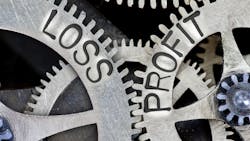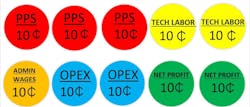It’s interesting how the public school system’s core subjects are English, math, science, social studies and maybe a foreign language or PE. These five core subjects teach our kids that getting good grades is important. In middle and high school, good grades are necessary to get accepted into a good college. Once in college, good grades are needed to land a good job in their desired career. The trouble with this thinking, in my opinion, is once hired, they are likely working for a company and not themselves. The icing on the cake is once working, they are told they should contribute to their 401(k) for the next 40 years, retire, and then eventually die! Hopefully, I haven’t stepped on any toes. I am stating what I have observed over my lifetime. If I had my way, the public school systems could continue with the five core subjects, of course, but create more classes on entrepreneurship and personal finance. The latter two are crucial to ensuring capitalism, free market, and private ownership will continue into America’s future.
There is a common thread found when entrepreneurial multi-millionaires have been surveyed. The average GPA for this high-net-worth group runs around 2.9. Breaking that out, 21% of self-made millionaires were “A” students, 41% were “B” students, and 29% were “C” students. That’s right; there were more “C” student millionaires than “A” students! I have a friend from elementary school who was a “C” student throughout school and is now a billionaire. He didn’t excel in math or any other subject. One thing is for sure: he knew if he bought something for $1 and sold it for $2, he just made 50% gross profit. Basic math skills, drive, and having an entrepreneurial spirit are really all that are needed for a millionaire mindset.
So, will basic math skills alone work to run a highly profitable collision shop? Of course! Nearly two decades ago, I was taught a very simple and powerful way to look at a collision shop’s profit and loss statement. It’s called the Ten Dimes.
Let’s look at one dollar of revenue in a collision shop. Each dollar brought in is made up of 10 dimes, or 100 pennies. Simple enough, right? We are going to do some easy math here, so here we go! The first three dimes, or 30 cents, would go to pay for parts, paint, and sublet. The next two dimes or 20 cents would go to pay for technician labor. The next dime, or 10 cents, would go to pay for administrative wages. The next two dimes, or 20 cents, go to pay for overhead costs (rent, utilities, insurance, etc.). Now we only have 20 cents, or two dimes left. These are for the business’ net profit!
What does this really look like when one dime = 0? Here we go: 000 = parts, paint, and sublet, 00 = tech wages, 0 = admin wages, 00 = overhead, and 00 = net profit. I challenge you to take a whiteboard, draw 10 large circles on it, and then fill in these percentages for a nice visual of what this looks like. Then, grab your shop’s P&L , make 10 more large circles, and compare your percentages to the prior ten circle percentages.
I know already some of you are saying, “I only have a 10% or one dime net profit left at the end,” or, “Just my PPS costs are 40%+ or more.” If this is your case, you can obviously try to negotiate better discounts with your vendors, but deeper discounts are likely not the issue. The problem will likely lie in poor estimating. Every shop owner in the USA should know what their monthly average estimate hours are, trending on a graph. If you don’t know where you are for your shop, it’s time to find out. If you have a management system, it’s time to start using it! If you don’ t, then look at every job you delivered over the last three months and put the repair hours in Excel. (Hint: Leave out any jobs less than three hours,the junk). With the complexity of repairs for late model cars, and say your average R.O. is below say 35 hours, you’re likely leaving money on the table. It’s time to take some estimating classes.
If your technician costs exclude vacations and payroll taxes, you need to be in the 15%-16% range. Let’s say your admin. costs are over 14%, then you need to produce more cars with the same admin staff or let some admin. folks go.
When we make our P&L visual, it becomes easy to understand, and it will almost speak to you on areas to work on!

